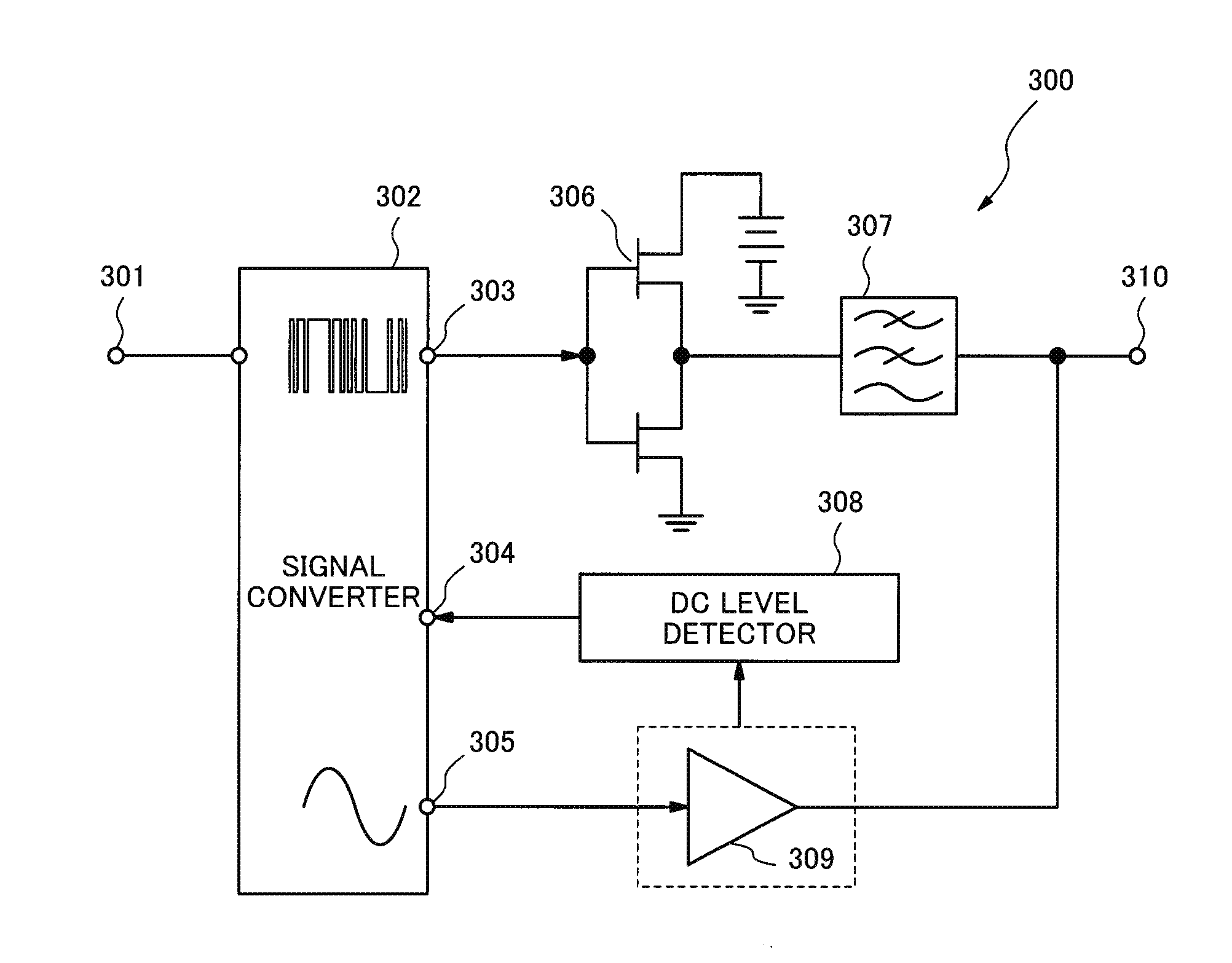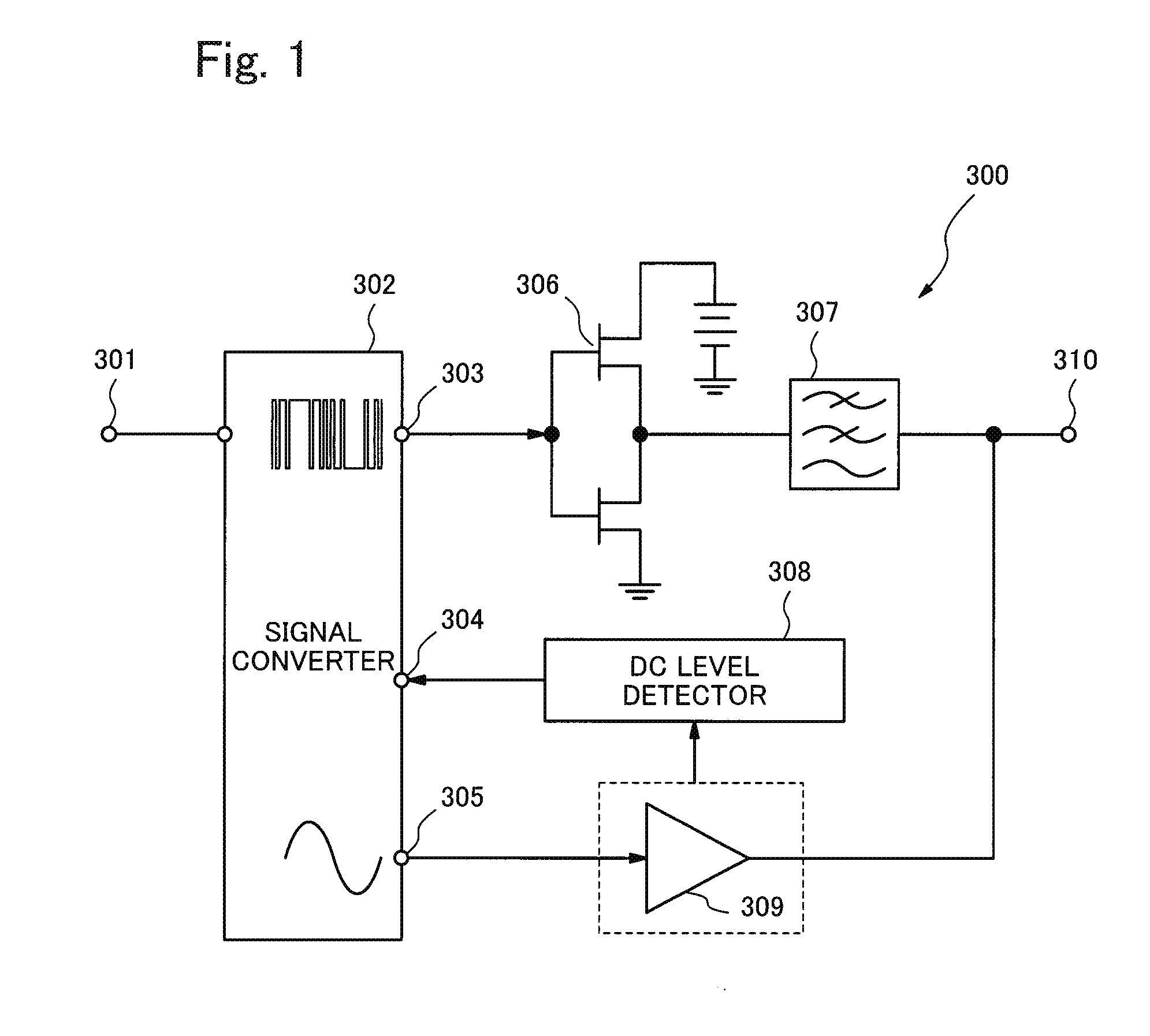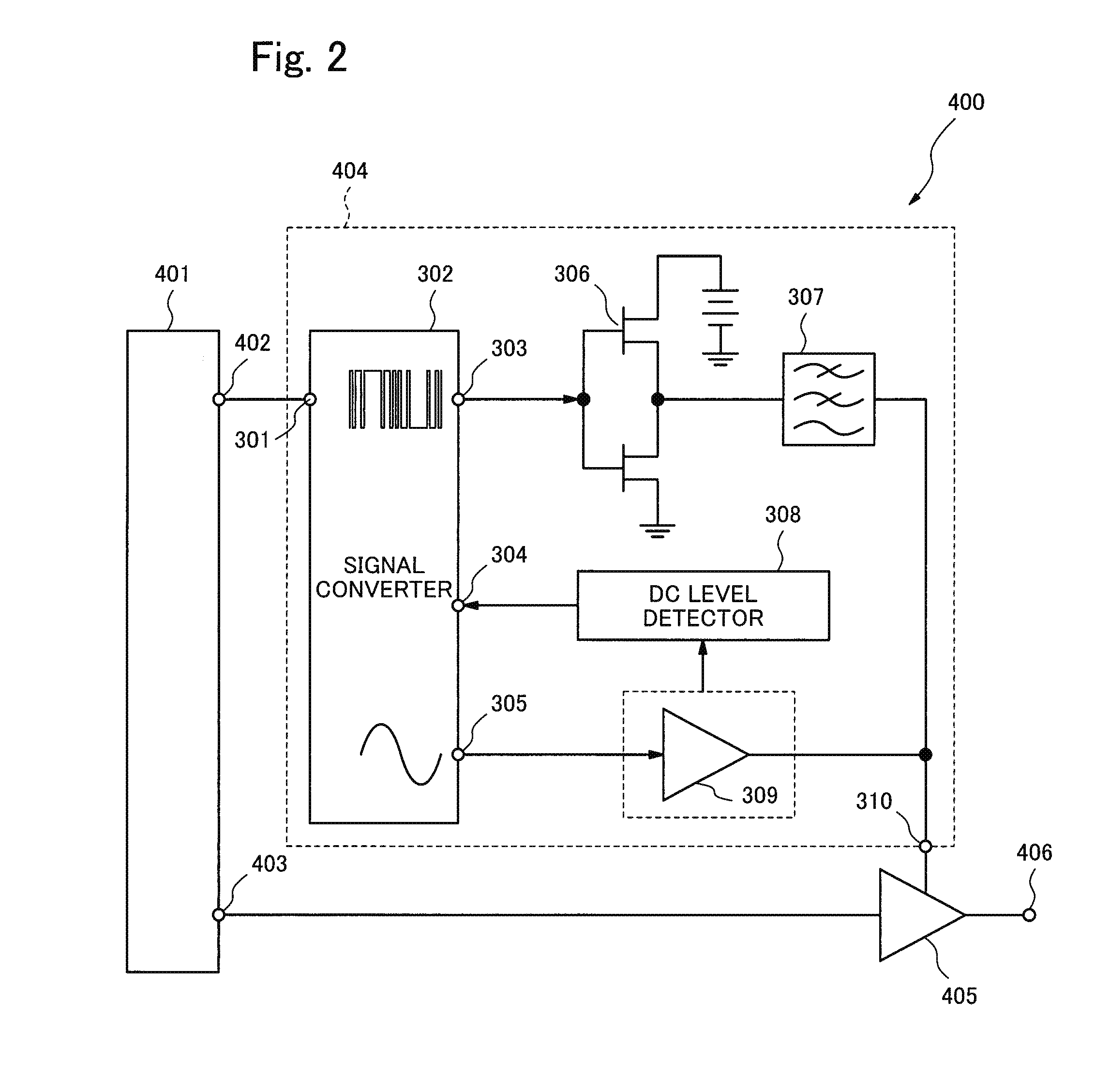Power amplifier, radio-frequency power amplification device, and amplification control method
- Summary
- Abstract
- Description
- Claims
- Application Information
AI Technical Summary
Benefits of technology
Problems solved by technology
Method used
Image
Examples
first exemplary embodiment
[0066]FIG. 1 is a block diagram showing an example of a configuration of a power amplifier 300 according to a first exemplary embodiment of the present invention. The power amplifier 300 comprises a signal input terminal 301, a signal converter 302 (signal conversion block), a digital signal output terminal 303, a DC (Direct Current) feedback terminal 304, and an analog signal output terminal 305. Further, the power amplifier 300 comprises a switching amplifier 306, a low pass filter 307, a DC level detector 308 (DC level detection block), a linear amplifier 309, and a signal output terminal 310.
[0067]A signal that is an amplification target is inputted through the signal input terminal 301. The signal converter 302 generates a digital signal amplified by the switching amplifier 306 and an analog signal amplified by the linear amplifier 309 from the signal inputted through the signal input terminal 301 based on a predetermined signal generation parameter. In this operation, the sign...
second exemplary embodiment
[0074]FIG. 2 is a block diagram showing an example of a configuration of a radio-frequency power amplification device 400 according to a second exemplary embodiment of the present invention. The radio-frequency power amplification device 400 comprises a baseband signal conversion circuit 401, an amplitude signal output terminal 402, a first radio-frequency modulation signal output terminal 403, a second radio-frequency modulation signal output terminal 406, a power supply modulator 404, and a radio-frequency power amplifier 405. The configuration of the power supply modulator 404 is the same as that of the power amplifier 300 of the first exemplary embodiment.
[0075]The baseband signal conversion circuit 401 outputs a radio-frequency modulation signal obtained by converting a baseband signal through the first radio-frequency modulation signal output terminal 403 and outputs the amplitude modulation component of the radio-frequency modulation signal through the amplitude signal output...
third exemplary embodiment
[0078]FIG. 3 is a block diagram showing an example of a configuration of a power amplifier 500 according to a third exemplary embodiment of the present invention. The power amplifier 500 comprises a signal input terminal 501, the signal converter 302, a linear amplifier module 503, a switching amplifier module 504, and a signal output terminal 505.
[0079]The input signal that is the amplification target is inputted through the signal input terminal 501. The signal converter 302 comprises a signal distributor 502 (signal distribution block) and a 1-bit signal generator 510. The signal distributor 502 divides the input signal into two signals (a first signal and a second signal). After that, after the signal distributor 502 adjusts an amount of relative delay between two divided signals and a signal band, the signal distributor 502 outputs one signal (first signal) to the switching amplifier module 504 and outputs the other signal (second signal) to the linear amplifier module 503. The...
PUM
 Login to View More
Login to View More Abstract
Description
Claims
Application Information
 Login to View More
Login to View More - R&D
- Intellectual Property
- Life Sciences
- Materials
- Tech Scout
- Unparalleled Data Quality
- Higher Quality Content
- 60% Fewer Hallucinations
Browse by: Latest US Patents, China's latest patents, Technical Efficacy Thesaurus, Application Domain, Technology Topic, Popular Technical Reports.
© 2025 PatSnap. All rights reserved.Legal|Privacy policy|Modern Slavery Act Transparency Statement|Sitemap|About US| Contact US: help@patsnap.com



